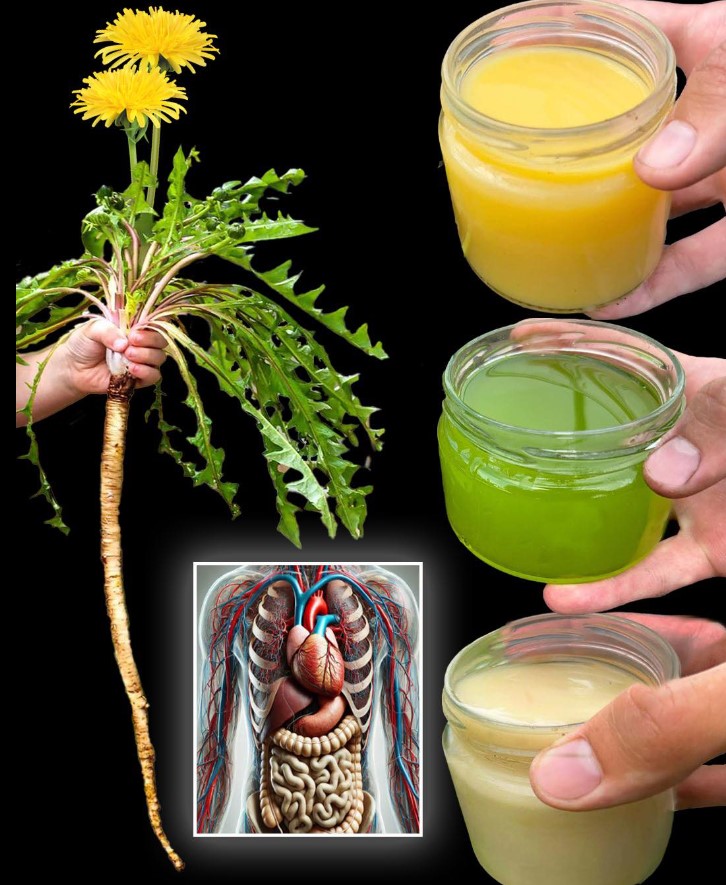Often dismissed as a mere weed, the dandelion is a remarkable plant with a rich history and a wide array of benefits. From its bright yellow flowers that signal the arrival of spring to its fluffy seed heads that dance in the wind, the dandelion is much more than an ordinary plant. In fact, it’s a treasure trove of natural goodness, offering medicinal, nutritional, and even environmental benefits. Let’s explore why the mighty dandelion deserves more than just a second glance.
The Dandelion’s Origins and History
The dandelion (scientifically known as Taraxacum officinale) is native to Eurasia, but it has spread widely across the globe, becoming a common sight in lawns, meadows, and roadsides. Its name, “dandelion,” is derived from the French term “dent de lion,” meaning “lion’s tooth,” referring to the jagged shape of the leaves. Historically, dandelions were valued not only as food but also for their medicinal properties, and they were used by ancient cultures in Europe, Asia, and the Americas.
Nutritional Powerhouse
One of the most surprising facts about dandelions is their exceptional nutritional profile. Almost every part of the plant is edible and rich in vitamins, minerals, and antioxidants.
- Leaves: Dandelion leaves are a powerhouse of nutrients. High in vitamins A, C, and K, they also provide significant amounts of calcium, iron, and magnesium. These leaves can be eaten raw in salads or sautéed like spinach.
- Roots: Dandelion roots are often used in herbal medicine. Rich in fiber, they can support digestive health and help detoxify the liver. Roasted dandelion root is also a common caffeine-free substitute for coffee.
- Flowers: The bright yellow flowers are packed with antioxidants and are sometimes used in jams, teas, and even wine. They are also a natural source of vitamin C.
- Seeds: The seeds, although not commonly consumed, can be used for various purposes, including as a natural diuretic.
Medicinal Benefits
Dandelions have a long-standing reputation in herbal medicine due to their wide range of health benefits. Here are some of the most well-known therapeutic uses:
- Digestive Health: Dandelion roots and leaves have long been used to aid digestion and promote healthy liver function. Dandelion is a natural diuretic, which means it helps the body flush out excess water and toxins.
- Anti-Inflammatory: The plant contains compounds like polyphenols that have anti-inflammatory properties, making it useful for conditions like arthritis and other inflammatory disorders.
- Antioxidant Rich: Dandelions are rich in antioxidants, which help combat oxidative stress and protect cells from damage caused by free radicals. This may play a role in reducing the risk of chronic diseases such as cancer and heart disease.
- Blood Sugar Regulation: Some studies suggest that dandelion can help regulate blood sugar levels, making it a potential aid for people with type 2 diabetes.
Culinary Uses
While many people view dandelions as little more than a nuisance in their yards, the plant has a rich culinary history. Here are a few ways you can incorporate dandelions into your diet:
- Salads: The young, tender dandelion greens are perfect for a fresh salad, offering a slightly bitter flavor that pairs well with sweet fruits, nuts, and vinaigrette.
- Dandelion Tea: Both the roots and leaves can be used to make a nourishing tea, which is said to promote detoxification and soothe digestion.
- Dandelion Wine: The flowers can be fermented to create a light, floral wine.
- Dandelion Coffee: Roasted dandelion roots are often used as a coffee substitute, offering a robust, earthy flavor without the caffeine.
- Jams and Syrups: Dandelion flowers can be turned into sweet, golden jams or syrups that add a unique twist to traditional preserves.
Environmental Benefits
Dandelions are not just beneficial to humans—they also play a significant role in the environment:
- Pollinator-Friendly: The bright yellow flowers attract pollinators, such as bees and butterflies, making them an important plant for supporting biodiversity.
- Soil Health: Dandelions have deep taproots that can help aerate the soil, improving its structure and allowing water to reach deeper levels. Their roots can also bring up nutrients from deep within the soil, enriching the surrounding area.
- Natural Fertilizer: When dandelion plants die, they decompose and add valuable nutrients back into the soil, acting as a natural fertilizer.
Sustainability and Foraging
The dandelion’s resilience and abundance make it a perfect example of a sustainable, wild food source. With a bit of foraging knowledge, you can gather dandelions from your own yard (or a pesticide-free area) to enjoy their many benefits. Since dandelions grow virtually everywhere, they are a valuable resource for those looking to reduce their environmental footprint or connect with nature.
How to Forage and Use Dandelions Safely
If you’re interested in foraging dandelions for food or medicinal purposes, here are a few tips:
- Identify the Plant Correctly: Ensure you’ve correctly identified the dandelion plant, as there are lookalikes that may be toxic.
- Avoid Contaminated Areas: Avoid picking dandelions from areas that may have been sprayed with pesticides or herbicides.
- Use All Parts of the Plant: From the roots to the leaves and flowers, every part of the dandelion has a purpose. Be sure to wash them thoroughly before use.
- Moderation is Key: While dandelions are safe for most people, they can have a diuretic effect. It’s important to use them in moderation and consult a healthcare provider if you’re pregnant, nursing, or have a medical condition.
Conclusion
The dandelion is a true hidden treasure of nature, offering a wealth of benefits for the body, the environment, and the culinary world. From its medicinal properties to its role in supporting biodiversity, the mighty dandelion is far more valuable than many realize. So, the next time you spot a patch of these vibrant yellow flowers, remember that you’re looking at a natural powerhouse—a plant that can nourish, heal, and enrich both the land and your life.

